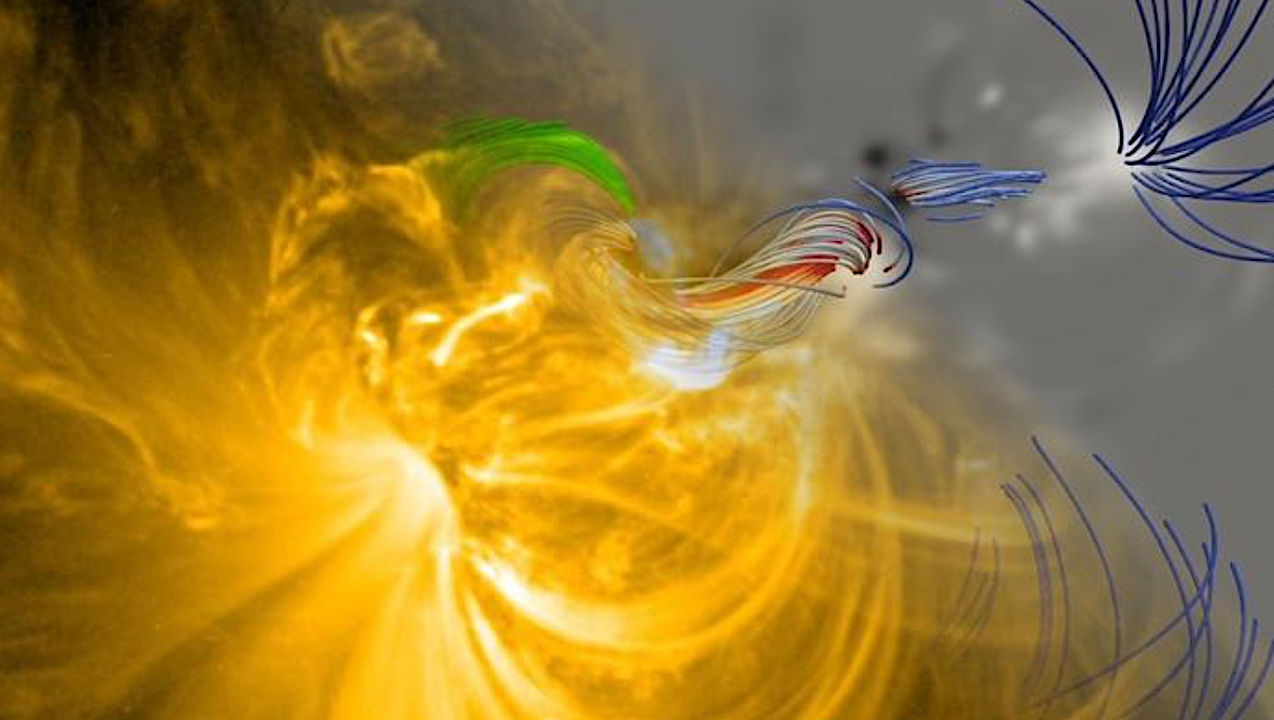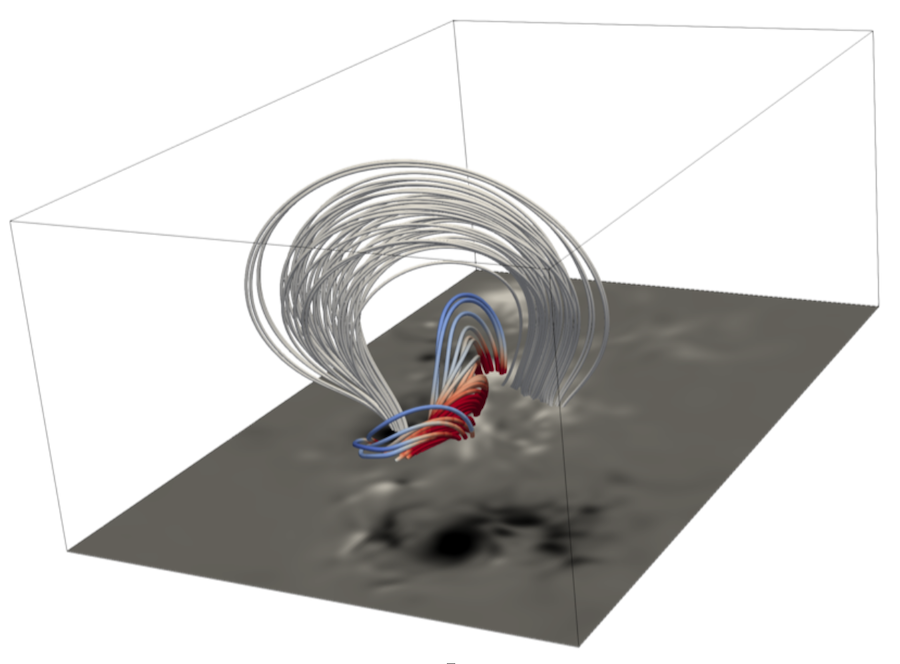
Composite of observation in the extreme ultraviolet (left) and magnetic field (right). The magnetic field lines are obtained from the simulation and show agreement with the structures delineated in EUV (from Jarolim et. al, 2023).
Scientists from the University of Graz, in collaboration with researchers from Skoltech, have achieved a breakthrough in solar physics by using artificial intelligence to simulate the magnetic field in the Sun’s upper atmosphere in near real time. This groundbreaking research, published in Nature Astronomy, holds immense promise for advancing our understanding of the Sun’s behavior and its impact on space weather.
The solar magnetic field is the main driver of space weather, which can cause damage to critical infrastructure such as electricity, aviation and our space technology. The major source of severe space weather events are active solar regions, which are regions around sunspots where strong magnetic fields emerge across the solar surface. Current observational capabilities only allow us to measure the magnetic field at the surface of the Sun, however, the accumulation and release of energy occurs higher up in the solar atmosphere, the corona of the Sun.
By exploiting the capabilities of physics-based neural networks, the team was able to successfully integrate observational data with the forceless physical magnetic field model, providing a comprehensive understanding of the connection between the observed phenomena and the underlying physics governing the activity of the Sun. This state-of-the-art method marks a significant milestone in solar physics and opens up new opportunities for numerical simulations of the Sun.
Researchers simulated the evolution of an observed solar active region and demonstrated the ability to perform forceless magnetic field simulations in real time. Surprisingly, this process required only less than 12 hours of computational time to simulate a five-day series of observations. This unprecedented speed allows scientists to conduct real-time analysis and forecasts of solar activity, improving our ability to predict space weather events.
The team further studied the temporal evolution of free magnetic energy within the coronal volume, which is linked to solar eruptive events on the Sun such as coronal mass ejections, large clouds of plasma ejected from the Sun’s atmosphere at speeds of 100 -3,500 km/s. Comparison with observations in the extreme ultraviolet confirmed the robustness and accuracy of the methodology. Crucially, the results revealed significant depletions of free magnetic energy, both spatially and temporally, that are directly related to the observed solar flares.

Simulated magnetic field lines with the observed surface magnetic field at the bottom (from Jarolim et. al, 2023).
Robert Jarolim, the lead researcher, commented on the implications of this breakthrough: Our use of artificial intelligence in this context represents a transformative leap forward. The use of AI techniques for numerical simulations allows us to better incorporate observational data and has great potential to further advance our simulation capabilities. Skoltech Associate Professor Tatiana Podlachikova points out: ‘The speed of computation holds great promise for improving space weather predictions and advancing our understanding of the behavior of the Sun.’
This research conducted by scientists from the University of Graz and Skoltech represents a significant advance in the field of solar physics. Harnessing the power of artificial intelligence and physics-based neural networks, they achieved real-time simulations of the solar coronal magnetic field, revolutionizing our ability to understand solar activity.
The study was developed with support from Skoltech Zhores’ high-performance cluster for the anticipated Solar Physics Research Integrated Network Group (SPRING) which will provide autonomous monitoring of the Sun using cutting-edge technology in observational solar physics. SPRING is pursued within the SOLARNET project, which is dedicated to the European Solar Telescope initiative supported by the EU’s Horizon 2020 research and innovation funding programme.
#Artificial #intelligence #enables #insights #solar #magnetic #field
Image Source : spaceref.com
